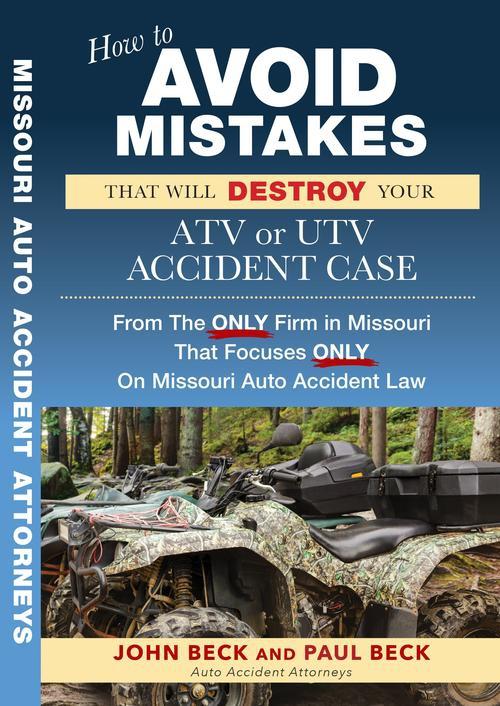Right-of-way laws in Missouri play a critical role in keeping roads safe for drivers, pedestrians, and cyclists. These rules dictate who must yield in various traffic situations, ensuring an orderly flow of vehicles and reducing the risk of accidents. Failing to follow these laws can lead to dangerous collisions and significant legal consequences.
Understanding Missouri’s right-of-way laws is essential for every driver on the road. Whether approaching an intersection, navigating a roundabout, or encountering a pedestrian crosswalk, knowing when to yield is not just a courtesy—it’s a legal obligation. The Missouri driver guide provides a detailed outline of these rules to help motorists comply with state regulations and avoid accidents.
Violating right-of-way laws can have serious consequences, from hefty fines to liability in traffic accidents. For example, drivers who fail to yield at a stop sign or during a left-hand turn may be found at fault if an accident occurs. This is especially true in Missouri, which adheres to comparative fault laws, meaning liability in an accident can be shared among multiple parties depending on their actions.
Pedestrians and cyclists also benefit from the protections afforded by right-of-way laws. Missouri law requires drivers to yield to pedestrians in crosswalks and at intersections, emphasizing the importance of vigilance in areas with heavy foot traffic. For cyclists, these rules ensure safer integration with motor vehicles, particularly at intersections and on shared roadways.
The Missouri Driver Guide is an excellent resource for staying informed. By understanding and following these regulations, you can contribute to safer roads and avoid legal complications from preventable accidents. Continue with this legal guide by skilled Missouri car accident lawyer Paul Beck to learn more.
Right of Way at Missouri Intersections
Navigating intersections in Missouri can be challenging, significantly, when traffic signals, signs, or road designs vary. Understanding who has the right of way at different intersections is critical to preventing accidents and ensuring smooth traffic flow.
The Missouri Department of Revenue provides a detailed breakdown of these rules. Here’s an overview tailored to common intersection scenarios:
Uncontrolled Intersections
At intersections without signs or signals, Missouri law requires drivers on the left to yield to vehicles on the right if they arrive simultaneously. This rule, outlined in RSMo Section 304.351, ensures that traffic moves predictably and reduces confusion among drivers.
Controlled Intersections
When stop signs or traffic lights are present, drivers must yield to vehicles already in the intersection. At a four-way stop, the first driver to arrive goes first. If multiple cars arrive simultaneously, the driver on the right has the right of way. When traffic lights are green, proceed cautiously; at yellow lights, prepare to stop unless it is unsafe.
T-Intersections and Roundabouts
Drivers on a terminating road at a T-intersection must yield to vehicles on the through road. Similarly, in roundabouts, those entering must yield to traffic already circulating. These designs prioritize smoother traffic flow and reduce collision risks.
Emergency Vehicles and Pedestrians
Always yield to emergency vehicles with flashing lights and sirens by pulling to the right and stopping. Additionally, drivers must yield to pedestrians at all crosswalks, whether marked or unmarked, as pedestrian safety takes precedence.
Following these guidelines and familiarizing yourself with resources like the Missouri driver guide and RSMo Section 304.351 will help keep Missouri roads safe and efficient for everyone.
Right and Left Turns
Making right and left turns in Missouri requires careful attention to right-of-way laws to avoid collisions and keep traffic moving safely. Knowing when to yield and how to approach turns is essential for all drivers on the road. Missouri law clearly outlines these rules, ensuring consistency and safety at intersections and other turning points.
Right Turns
When making a right turn, drivers must approach as close as possible to the right-hand curb or edge of the roadway. Always signal in advance, check for pedestrians, and yield to any vehicles or pedestrians crossing the path of your turn.
If a traffic light or stop sign is present, come to a complete stop and proceed only when it is safe and legal. Turning too wide or failing to yield can create dangerous situations, especially in busy intersections.
Left Turns
Left turns are more complex because they often require crossing oncoming traffic. Under RSMo Section 300.215, drivers turning left must yield the right of way to oncoming vehicles close enough to pose a hazard. This applies at intersections, driveways, and private roads.
Always signal your intent to turn and wait for a safe gap in oncoming traffic before proceeding. If two vehicles turn left from opposite directions at an intersection, both should pass to the left of the center point to avoid crossing paths.
By following Missouri’s right and left turn laws, drivers can reduce the risk of accidents and navigate intersections safely. Familiarizing yourself with regulations like RSMo Section 300.215 ensures you’re making safe, lawful turns every time.
Are U-Turns Legal in Missouri?
U-turns are legal in Missouri, but only under specific conditions prioritizing safety and traffic flow. Drivers must follow state laws to ensure their U-turn does not endanger others or disrupt traffic. Understanding where and when U-turns are permitted can help avoid traffic violations and accidents.
Where U-Turns Are Prohibited
Missouri law prohibits U-turns in business districts. These areas typically include roads with businesses or offices lining at least 300 feet of the street. Additionally, U-turns are prohibited at intersections controlled by traffic lights or police officers. Signs posted at certain intersections may also explicitly prohibit U-turns, and drivers must comply with these restrictions.
Conditions for Legal U-Turns
Outside business districts, U-turns are allowed only if they can be made safely and without interfering with other traffic. Visibility plays a crucial role—drivers cannot execute a U-turn if their vehicle is not visible for at least 300 feet in either direction.
This restriction applies near curves, hills, or other areas with limited sight lines. Turning around when it would be dangerous or disruptive to other vehicles is strictly prohibited.
To avoid penalties and ensure safety, always check for “No U-Turn” signs and assess traffic conditions before attempting a U-turn. By following these rules, drivers can perform U-turns responsibly and in compliance with Missouri law.
For more details, refer to the Missouri driver guide, which outlines the state’s turning and roadway laws in greater depth.
Right-of-Way When Entering a Highway
Entering a highway in Missouri requires drivers to carefully assess traffic conditions and yield the right of way to vehicles already on the road. Understanding and following these rules helps ensure smooth traffic flow and minimizes the risk of collisions during merging.
When approaching a highway on-ramp, drivers must yield to vehicles traveling on the highway. The cars already on the road have the right of way, and the merging driver must adjust their speed to enter safely. Use the acceleration lane to match the traffic speed on the highway, allowing for a smooth transition without forcing highway drivers to brake or swerve.
Drivers entering a highway should also be mindful of vehicles in adjacent lanes. Signal your intention to merge well in advance and wait for a safe gap in traffic before proceeding. Abrupt or aggressive merging can cause dangerous situations, particularly on high-speed roads.
Highway drivers should remain vigilant and allow space for merging vehicles when possible, but the responsibility ultimately falls on the merging driver. Failing to yield the right of way when entering a highway can lead to accidents and may result in citations for violating Missouri’s traffic laws.
By following these right-of-way rules, drivers can safely navigate the challenges of highway entry. For further guidance, refer to the Missouri driver guide, which provides detailed information about highway safety and right-of-way laws.
What is the “Move Over” Rule in Missouri?
Missouri’s “Move Over” Law, outlined in R.S.Mo. § 304.022 protects law enforcement officers, emergency responders, and highway workers as they perform their duties. The law requires drivers to approach stationary vehicles with flashing red, red, and blue or amber lights cautiously, ensuring a safer environment for those working on or near the road.
If you’re driving on a multi-lane highway, the law mandates a lane change away from the stationary vehicle, provided it is safe. This means shifting to a lane not adjacent to the emergency or service vehicle to create a buffer zone.
If changing lanes is unsafe or impossible—such as on a two-lane highway—drivers must slow down while maintaining a safe speed that accounts for traffic and road conditions.
The Move Over rule applies to emergency vehicles, MoDOT vehicles, and other transportation workers displaying amber or amber-and-white flashing lights. Depending on the severity of the violation, drivers who fail to follow this law can face fines or even imprisonment.
Motorists who comply with Missouri’s Move Over law help reduce the risk of accidents and injuries for roadside workers and responders. Always be alert, adjust your speed, and change lanes cautiously when approaching vehicles with flashing lights.
Missouri Merging Laws
Merging safely in Missouri is governed by state laws designed to prevent accidents and clarify responsibility in the event of a collision. The primary statute addressing merging situations is R.S.Mo. § 304.015 setting clear expectations for drivers entering or moving between lanes.
Key Points of Missouri’s Merging Laws:
Entering a Highway: Under R.S.Mo. § 304.351, vehicles merging onto a highway must yield the right-of-way to traffic already on the road. This ensures that cars traveling at highway speeds are not forced to brake abruptly or swerve to avoid a collision.
Changing Lanes: According to R.S.Mo. § 304.015, drivers are prohibited from merging into an adjacent lane unless they have determined it is safe. This includes checking mirrors and blind spots and ensuring enough space to integrate without disrupting traffic flow.
Fault in Merging Accidents: In most cases, the merging driver is at fault if they fail to yield or merge unsafely. However, exceptions may apply in cases involving:
- Aggressive behavior from the other driver (e.g., speeding up to block the merge).
- Impairments, such as drunk driving, by the non-merging driver.
- Distracted or speeding drivers on the highway.
Understanding Missouri’s merging laws and exercising caution while entering highways or changing lanes can help prevent accidents and clarify liability in case of a collision.
Pedestrian Right-of-Way Laws in Missouri
Missouri law establishes specific rules to ensure pedestrians’ safety and regulate vehicle interactions. The state statutes provide clear guidance for when drivers must yield and when pedestrians must exercise caution or produce themselves.
Key Pedestrian Right-of-Way Rules
Pedestrians’ Right-of-Way in Crosswalks: Under R.S.Mo. § 300.375, drivers must yield the right-of-way to pedestrians crossing the road within a crosswalk if:
- The pedestrian is on half of the roadway on which the vehicle is traveling.
- The pedestrian is approaching so closely from the opposite side that they pose a danger.
- However, pedestrians must not suddenly step into the path of a vehicle when it is too close for the driver to stop safely. Additionally, vehicles approaching from behind must not overtake or pass another vehicle stopped at a crosswalk to allow pedestrians to cross.
When Pedestrians Must Yield: R.S.Mo. § 300.390 requires pedestrians crossing outside of marked or unmarked crosswalks at intersections to yield the right-of-way to vehicles on the roadway.
Prohibited Crossings: According to R.S.Mo. § 300.395, pedestrians are prohibited from crossing between intersections with traffic signals or in business districts except at designated crosswalks.
By adhering to these rules, pedestrians and drivers can help reduce accidents and ensure safer travel on Missouri’s roadways. Pedestrians should always remain vigilant and avoid crossing in unsafe or prohibited areas.
What Are Missouri Right-of-Way Laws for Bicyclists?
Missouri law treats bicycles as vehicles, meaning bicyclists are granted the same rights and held to the same responsibilities as drivers when operating on public roads. According to the Missouri State Highway Patrol, bicyclists, such as motor vehicles, must obey all traffic signals, signs, and road rules.
Regarding right-of-way, bicyclists are required to yield under specific circumstances. For instance, a bicyclist must yield to oncoming traffic when entering a roadway from a driveway, alley, or private road. Similarly, bicyclists must yield the right-of-way to pedestrians crossing within crosswalks or otherwise legally on the roadway.
Drivers of motor vehicles are also required to respect the rights of bicyclists. Motorists must yield when bicyclists are already lawfully occupying the roadway and should exercise caution when overtaking or passing a bicycle. Missouri law specifies that drivers must provide a safe distance when passing a bicyclist to avoid collisions.
Bicyclists must ride as close to the right side of the road as practicable, except when preparing for a left turn, avoiding hazards, or traveling at the same speed as traffic. However, they can use the entire lane if safety requires it, such as when passing parked cars or navigating narrow roadways.
Understanding these right-of-way laws is crucial for bicyclists and motorists to ensure safe and harmonious use of Missouri’s roads. Misunderstanding or disregarding these rules can lead to preventable accidents and legal consequences.
Experienced Missouri Auto Accident Attorneys
At Beck & Beck Car Missouri Accident Lawyers, we understand how overwhelming life can become after an auto accident. With decades of experience handling personal injury cases across Missouri, we are committed to fighting for the justice and compensation you deserve.
Whether you’ve been injured by a distracted driver in a multi-vehicle collision or any other accident caused by negligence, our team is here to guide you every step of the way.
From negotiating with insurance companies to representing you in court, we’ll be your advocate through every stage of the process. We take pride in providing personalized attention to every client, investigating your case thoroughly, and building a strong strategy to maximize your recovery.
Don’t navigate this challenging time alone—let Beck & Beck Missouri Car Accident Lawyers protect your rights. Contact us today for a free consultation and take the first step toward getting your life back on track.
We’ve helped residents across the state of Missouri in cities including Kansas City, Florissant, St. Louis, Cape Girardeau, Springfield, Pine Lawn, and more.












